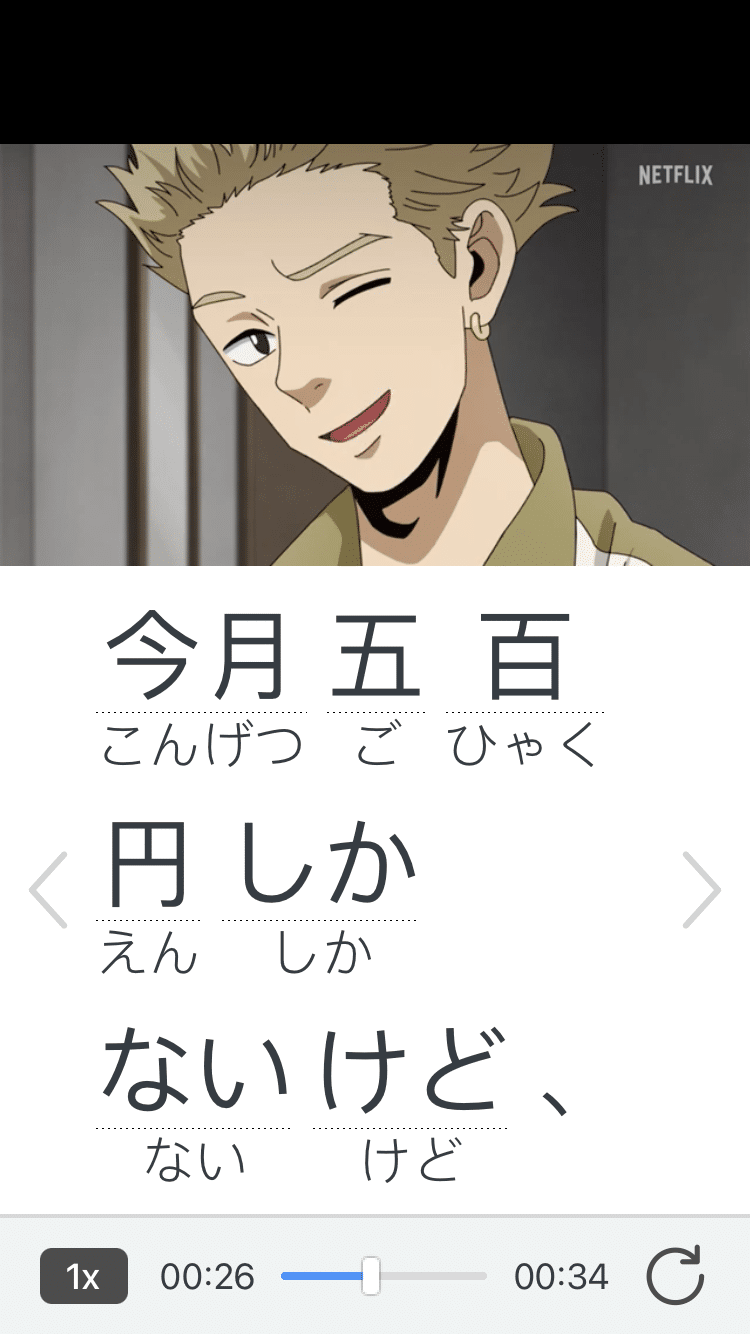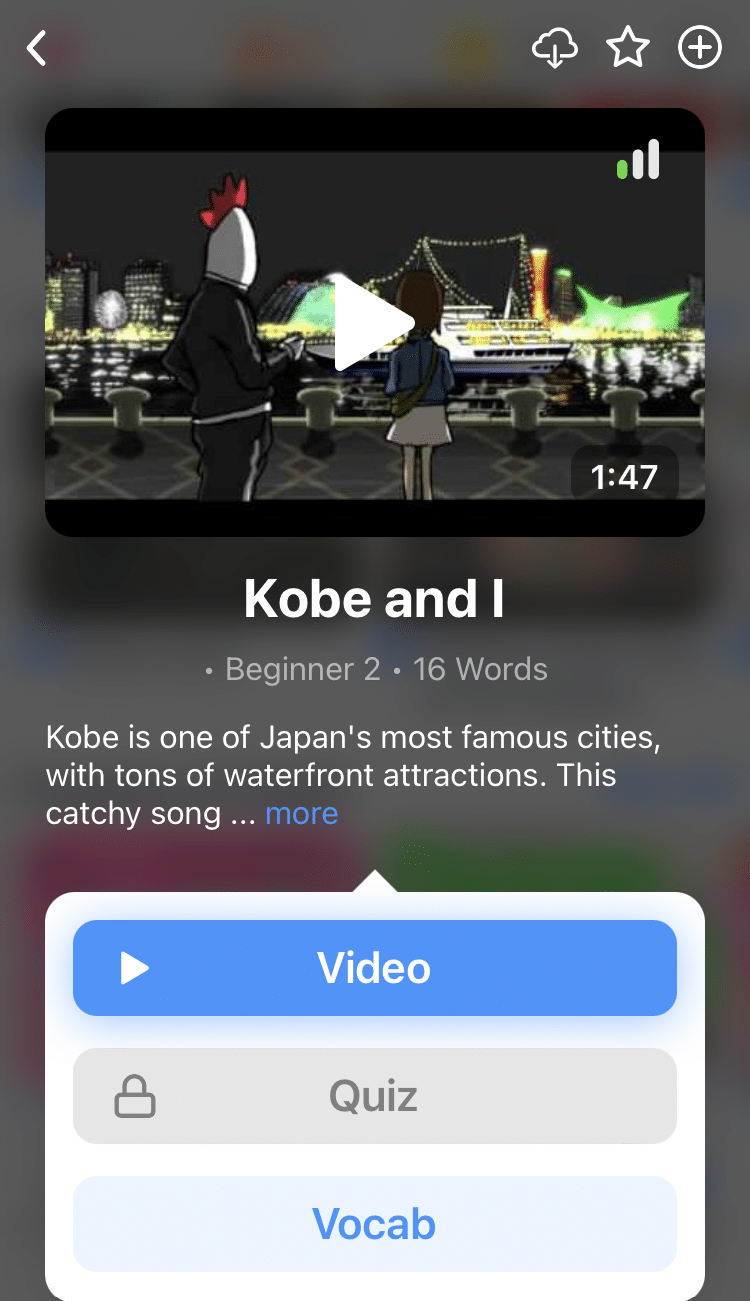
How to Describe People in Japanese
You might have an idea of the Japanese basics and how to talk about yourself in Japanese, but there will probably be times when you want to talk about someone else.
In this guide, we’re going to take a look at third-person grammar, including a little about Japanese pronouns and vocabulary to describe physical features and personality traits. We’ll also look at sentence patterns for jobs and hobbies.
Contents
- 1. Describing People’s Relationships to You
- 2. Describing Appearances
- 3. Describing Personality
- 4. Describing Jobs and Hobbies
- And One More Thing...
Download: This blog post is available as a convenient and portable PDF that you can take anywhere. Click here to get a copy. (Download)
1. Describing People’s Relationships to You
First of all, it would be a good idea to describe how you know this person. Are they a friend, a family member or a classmate?
Here’s how to describe these things, and also how to explain that you’ve been separated from them, if applicable:
私の友達が見つかりません。
(わたしの ともだちが みつかりません。)
I can’t find my friend.
To change “friend” for another relationship designation, simply take away 友達 and replace it with:
- お母さん (おかあさん) — Mother
- お父さん (おとうさん) — Father
- お婆さん (おばあさん) — Grandmother
- お爺さん (おじいさん) — Grandfather
- お兄さん (おにいさん) — Big brother
- 弟 (おとうと) — Little brother
- お姉さん (おねえさん) — Big sister
- 妹 (いもうと) — Little sister
- 従兄弟 (いとこ) — Cousin
- クラスメート (くらすめーと) — Classmate
- 同僚 (どうりょう) — Co-worker
2. Describing Appearances
Describing someone’s appearance is something you may need to do if you get separated from a friend or a family member and you don’t have a photograph of them on your phone.
Here are some grammar patterns and vocabulary for this kind of situation.
Race and Gender
A good place to start would be at the very basics. Here are a few ways to describe someone’s gender and race, ethnicity or nationality:
- 女の人 (おんなのひと) — Woman
- 女性 (じょせい) — Female
- 男の人 (おとこのひと) — Man
- 男性 (だんせい) — Male
- 白人 (はくじん) — White
- 黒人 (こくじん) — Black
- インド人 (いんどじん) — Indian
- アジア人 (あじあじん) — Asian
- アメリカ人 (あめりかじん) — American
- フランス人 (ふらんすじん) — French
Hair
髪の毛は______です。
(かみのけは_____です。)
Their hair is____.
- 長い (ながい) — Long
- 短い (みじかい) — Short
- 薄い (うすい) — Thin
- まっすぐ — Straight
- 縮毛 (ちぢれげ) — Curly
- 黒い (くろい) — Black
- 茶色 (ちゃいろ) — Brown
- ブロンド/金髪 (ぶろんど/きんぱつ) — Blond
- 赤毛 (あかげ) — Red
- 白髪 (はくはつ) — Gray
Body Type
彼は_____です。
(かれは_____です。)
He is _____.
彼女は_____です。
(かのじょは_____です。)
She is _____.
その人は_____です。
(そのひとは_____です。)
That person is _____.
- 背が高い (せが たかい) — Tall.
Note: Remember that they use centimeters in Japan, not feet and inches. It might be a good idea to get used to meters and centimeters if you’re not familiar with them already. - 背が低い (せが ひくい) — Short
- センチぐらい。( ___せんち ぐらい。) — About ___ cm tall.
- 痩せ型/スリム (やせがた/すりむ) — Slim
- とても体格が良い (とても たいかくが よい) — Fat.
Note: This is a very polite way of saying “fat,” like the English “large” or “big-boned.”) - 筋肉質 (きんにくしつ) — Muscular
Additional Details
You might feel like your description isn’t detailed enough, and want to add extra information that’ll make the person stand out from the crowd or make them more memorable.
Here are a few extra phrases that might be useful if they apply to the person you’re describing:
彼らは眼鏡をかけています。
(かれらは めがねをかけています。)
They’re wearing glasses.
彼らはそばかすがあります。
(かれらは そばかすが あります。)
They have freckles.
彼女はピンクのリュックサックを持っています。
(かのじょは ぴんくの りゅっくさっくを もっています。)
She has a pink backpack.
彼/彼女は双子の一人です。
(かれ/かのじょは ふたごの ひとりです。)
He/She’s a twin.
Using Connecting Adjectives
A useful thing to do when giving a description is to connect the Japanese adjectives for a smoother description.
For example, instead of saying this:
彼女の髪の毛は長いです。彼女の髪の毛は茶色です。
(かのじょの かみのけは ながいです。かのじょの かみのけは ちゃいろです。)
Her hair is long. Her hair is brown.
You can make it more natural by saying:
彼女の髪の毛は長くて茶色です。
(かのじょの かみのけは ながくて ちゃいろです。
Her hair is long and brown.
Connecting adjectives is a useful skill when you’re describing anything, and saves time in this kind of situation.
If it’s an い adjective, such as 長い (ながい, long) or 短い (みじかい, short), remove the last い and replace it with くて before the next adjective.
If it’s not an い adjective, such as 赤毛 (あかげ, red), add で after it before the next adjective to connect them. There are some examples below:
彼は筋肉質で背が高いです。
(かれは きんにくしつで せが たかいです。)
He’s muscular and tall.
彼女の髪の毛は長くて黒いです。
(かのじょのかみのけは ながくて くろいです。)
Her hair is long and black.
彼は背が低くてとても体格が良いです。
(かれは せがひくくて とても たいかくが よいです。)
He’s short and fat (said in a polite and flattering way).
3. Describing Personality
You might want to describe another person’s personality when, for example, you’re showing pictures of your family back home and you want to talk about them. Or perhaps you met someone interesting at a recent event or you’re talking about a friend who has done something nice for you.
If the person you’re talking about is physically there and you’re introducing them, start with:
こちらは_____(さん) です。
This is _____.
Similar to describing appearance above, these simple sentence patterns can be used if you’re using adjectives:
彼/彼女/あの人は_____です。
(かれ/かのじょ/あのひとは_____です。)
He/she/that person is _____.
サムは_____(な) 人です。
(さむは_____ (な) ひとです。)
Sam is a _____ person.
Here are some useful adjectives to add in the gap. Don’t forget to connect multiple adjectives for a more colorful description:
- いい — Good
- 面白い (おもしろい) — Funny
- 親切な (しんせつな) — Kind
- 優しい (やさしい) — Gentle
- 真面目な (まじめな) — True/Diligent/Hardworking
- スマート/頭がいい (すまーと/あたまがいい) — Smart/Intelligent
Here are some added phrases you can say while describing the person to add a more natural flow. This one is great to add some enthusiasm to your description:
本当の事です!
(ほんとうの ことです!)
I speak the truth!
The Japanese word お世辞 means “a compliment that is more like flattery and can be ironic.” By emphasizing that you’re not just flattering someone, you’re making anything you say sound nicer and more genuine:
お世辞じゃないですよ。
(おせじ じゃない ですよ。)
I’m not just saying this. I really mean it.
When describing other people in Japanese, it’s important to mostly be positive, as it is, of course, more polite.
In the case that you might want to say something negative about someone, such as a sibling (I know I’ve been in that situation a few times), here are some negative words for you to use:
- 意地悪 (いじわる) — Mean
- わがまま — Selfish
- ばか — Stupid
- 怠け者 (なまけもの) — Lazy
- つまらない/面白くない (つまらない/おもしろくない) — Boring
But use them at your own risk. Describing someone in this way isn’t recommended.
4. Describing Jobs and Hobbies
As well as gossiping about someone’s appearance and personality, you might want to add extra information about the person such as their jobs and hobbies. Let’s look at turning first-person grammar into third-person grammar.
Unlike English, Japanese doesn’t change much when switching to third person. In English, “I like” becomes “she likes.” “I don’t” becomes “she doesn’t.” This doesn’t happen in Japanese, which makes it pretty simple.
When talking about yourself you say this:
私は_____が好きです。
(わたしは_____がすきです。)
I like _____.
This becomes:
彼/彼女/person’s name は_____が好きです。
(かれ/かのじょ/person’s name は_____がすきです。)
He/she/person’s name likes _____.
彼らは_____がすきです。
(かれらは_____がすきです。)
They like _____.
Here’s another one which you can use to talk about yourself:
私は_____です。
(わたしは_____です。)
I am _____.
This becomes:
彼/彼女/person’s name は_____です
(かれ/かのじょ/person’s name は_____です。)
He/she/person’s name is _____.
彼らは_____です。
(かれらは_____です。)
They are _____.
Note: This one is used for adjectives or nouns.
And finally, you can use this one when describing what you like to do:
私は_____するのが好きです。
(わたしは_____するのが すきです。)
I like to _____.
This becomes:
彼/彼女/person’s name は_____するのが好きです。
(かれ/かのじょ/person’s name は_____するのが すきです。)
He/she/person’s name likes to _____.
彼らは_____するのが好きです。
(かれらは_____するのが すきです。)
They like to _____.
Jobs
As mentioned above, to describe someone else’s job, you simply change 私 (わたし, I) to 彼ら (かれら, they), 彼 (かれ, he), 彼女 (かのじょ, she) or their name to describe their job.
Here are some jobs below for your reference. Start the sentence with the pronouns:
- 幼稚園の先生 (ようちえんのせんせい) — Kindergarten teacher
- 小学校の先生 (しょうがっこうのせんせい) — Elementary school teacher
- 中学校の先生 (ちゅうがっこうのせんせい) — Junior high school teacher
- 高校の先生 (こうこうのせんせい) — High school teacher
- 大学の先生 (だいがくのせんせい) — University teacher
- 守衛 (しゅえい) — Security guard
- サラリーマン (さらりーまん) — Businessman
- 歯医者 (はいしゃ) — Dentist
- 医者 (いしゃ) — Doctor
- 看護師 (かんごし) — Nurse
- 店の販売員 (みせのはんばいいん) — Salesperson in a shop
- 消防士 (しょうぼうし) — Firefighter
- エンジニア (えんじにあ) — Engineer
Hobbies
Here are some hobbies and interests in Japanese for your reference. To say that someone enjoys doing these things, insert any of the following into this sentence:
(Name) は_____のが好きです。
((Name) は_____のがすきです。)
- ジョギングする (じょぎんぐする) — Jogging
- 泳ぐ (およぐ) — Swimming
- 釣りをする (つりをする) — Fishing
- 本を読む (ほんをよむ) — Reading books
- テレビ/映画を見る (てれび/えいがをみる) — Watching TV/movies
- スポーツする (すぽーつする) — Playing sports
- 音楽を聞く (おんがくをきく) — Listening to music
- ギター/ピアノ/ドラムを演奏する (ぎたー/ぴあの/どらむをえんそうする) — Playing guitar/piano/drums
- ブログを書く (ぶろぐをかく) — Writing blogs
Now you can describe people’s appearance, a little about their personality, their career and what they like to do. You can tell Japanese people more about your family and friends back home, and perhaps introduce someone who can’t introduce themselves in Japanese yet.
Download: This blog post is available as a convenient and portable PDF that you can take anywhere. Click here to get a copy. (Download)
And One More Thing...
If you love learning Japanese with authentic materials, then I should also tell you more about FluentU.
FluentU naturally and gradually eases you into learning Japanese language and culture. You'll learn real Japanese as it's spoken in real life.
FluentU has a broad range of contemporary videos as you'll see below:

FluentU makes these native Japanese videos approachable through interactive transcripts. Tap on any word to look it up instantly.

All definitions have multiple examples, and they're written for Japanese learners like you. Tap to add words you'd like to review to a vocab list.

And FluentU has a learn mode which turns every video into a language learning lesson. You can always swipe left or right to see more examples.

The best part? FluentU keeps track of your vocabulary, and gives you extra practice with difficult words. It'll even remind you when it’s time to review what you’ve learned. You'll have a 100% personalized experience.
Start using the FluentU website on your computer or tablet or, better yet, download the FluentU app from the iTunes or Google Play store. Click here to take advantage of our current sale! (Expires at the end of this month.)


